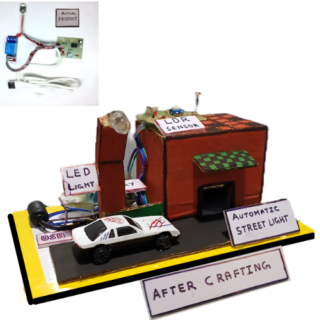
Fingerprint scanners are becoming a popular choice for security applications in DIY electronics projects. However, when powering these devices with low voltage, issues can arise, such as unreliable scanning or device failure. The good news is that these issues are simple to fix! Let’s dive into the problem and solution.
The Problem :
Fingerprint scanners typically require a steady power supply to function properly. Low voltage or unstable power can cause the device to behave erratically, leading to misreadings or even complete failure to power on.
The Solution :
To fix this, you’ll need to ensure a consistent power source. A common approach is to use a voltage regulator or a step-up converter that can boost your input voltage to the level required by the fingerprint scanner. For example, if your scanner needs 5V but you are using a 3.3V source, a step-up converter will help you achieve that stable 5V output.
Practical Example :
Let’s say you’re using a 3.7V Li-ion battery to power your project, but your fingerprint scanner needs 5V. By using a DC-DC step-up converter, you can convert the 3.7V from your battery to a steady 5V, ensuring your fingerprint scanner works without glitches.
Sample Calculation :
Suppose you need 5V, but you’re using a 3.7V battery.
To calculate the current required for a steady 5V output, you can use the formula:
P = IV (Power = Current x Voltage).
If your fingerprint scanner consumes 500mA at 5V, the required power is:
P = 0.5A x 5V = 2.5W.
To match the output power, the step-up converter will need to supply at least 2.5W.
Product Suggestion :
To ensure smooth power delivery, you might consider DC-DC step-up converters and voltage regulators. Check out these Made in India products for your project:
Shop now at SmartXProKits.in to find these components and optimize your prototyping setup. Support our work and India’s innovation—buy from our Make in India site!
Written by smartxbrains
- Industrial Automation141141 products
- Cooling Fan44 products
- Indicators1111 products
- Plastic Casing66 products
- Sensor2323 products
- Sleeve and cables55 products
- SMPS88 products
- Solid State Relay Module22 products
- Switches1818 products
- Temprature Sensor11 product
- 3D Printing180180 products
- 3D printing110110 products
- Combination Kit4747 products
- Electronic743743 products
- Audio55 products
- Battery/Charger Accessories2828 products
- Capacitors6464 products
- Connector4646 products
- cooling fan11 product
- Diode3535 products
- Displays1212 products
- IC and Chips6565 products
- IOT and Wireless99 products
- Leds2424 products
- Microcontrollers55 products
- Modules/Shield7575 products
- MOSFET / IGBT1414 products
- Power Supply2525 products
- Resistors130130 products
- Sensors5959 products
- SMD2828 products
- Switches1414 products
- Transistors6868 products
- Wire and Cables1212 products
- Hardware3232 products
- Hand Tools1414 products
- Hardware Accessories1414 products
- Printing22 products
- RC Plane and Drone99 products
- Robotic147147 products
- BO Motors1313 products
- General Purpose DC Motors2929 products
- Motor Drivers88 products
- Robotic Wheels & Tyres1414 products
- Servo Motor2727 products
- Stepper Motors88 products
- Synchronous Motor11 product
- Science Fair Project7070 products
- Final Year Ready Project Kit11 product
- STEM KIT2222 products
- E Books88 products




Leave a Reply
You must be logged in to post a comment.